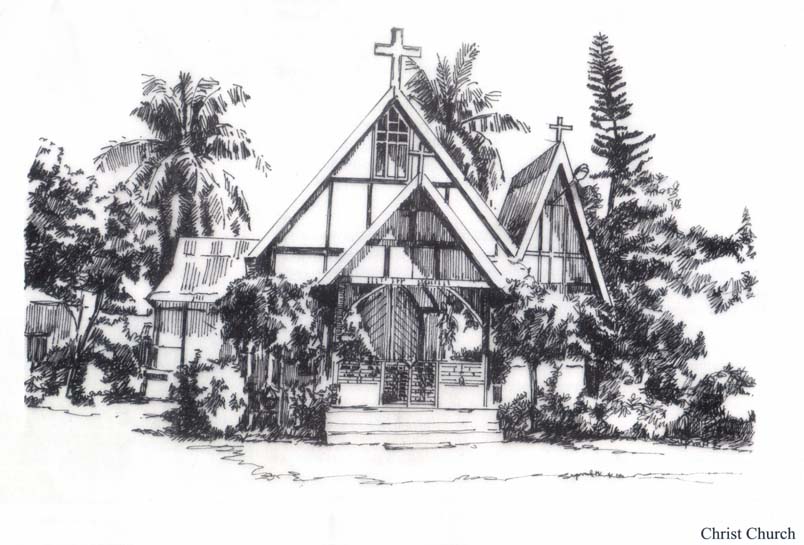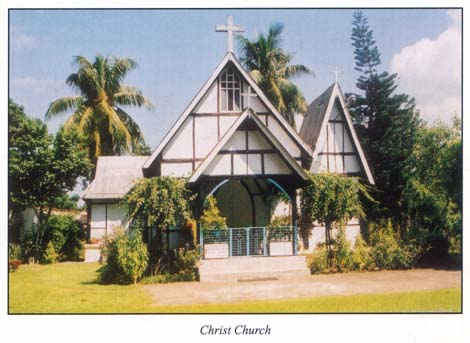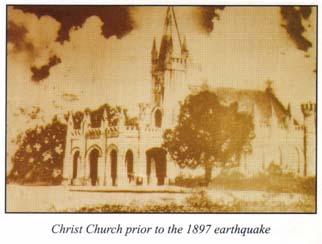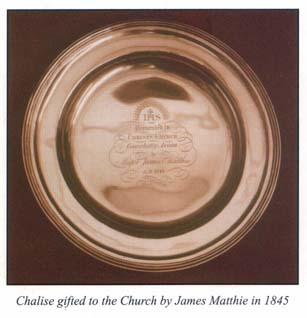PLACE TO THANK THE LORD |
 |
In the 1820s British contact with Assam and the Northeast Frontier increased because of two historically significant events. The first was the Treaty of Yandaboo of 1826 by which British hegemony extended to Assam. The second, almost around the same time, was the realization that Assam’s climate and soil conditions were perfect for tea cultivation. Consequent to these two events began an influx of British officers, soldiers and planters into the region, and with them also the Christian faith.
|
Some of the British administrators and planters who came to Assam had to often remain stationed here for long years. Naturally therefore they felt a growing need for a place of worship. Finally in 1839 Major Francies Jenkins, agent to the Governor General in the Northeast Frontier Provinces, received a notice from the Diocese of Calcutta “ to take appropriate measure for performance of baptism and marriage by public officers”. This accelerated the process of establishment of a church at Guwahati. Rev A Garstin, the chaplain of Sylhet and the first Anglican clergyman to visit the town, came twice between 1841 and 1843 in order to ensure proper planning of the church. In 1844 Rev R J Bland who was appointed the first chaplain of Assam reached Guwahati from Calcutta after an arduous journey by boat lasting six month. |
|
A committee had meanwhile been formed for the construction of the church building at Guwahati with Major James Matthie, Major Francies Jenkins, Major F Foquet, Captain E T Dalton, Captain E A Rowlatt, Lt Angew and Lt H S Biver as its members. This committee mobilized resources and ultimately on May 9, 1844, the foundation stone of the Christ Church was laid. Rev Bland had the honor of conducting the inaugural service in the new church on October 26, 1845. On August 23, 1850 the Bishop of Calcutta, Daniel Wilson consecrated the church. A cemetery in the land adjacent to the church was also consecrated the same evening.
|
|
The church originally “was an imposing building with a large square tower and a porch”. But the two major successive earthquakes of 1854 and 1897 took its toll. The church had to be renovated right from its foundation after the earthquake of 1854 But the renovated structure was also destroyed completely in the June 12, 1897 earthquake. The imposing building was leveled to the ground and Chaplain Rev G M Davies had to take shelter in the boat of the Chief Commissioner anchored in the nearby Katcharyghat. In 1903 the church was rebuilt again on public donation. Now it was a smaller Assam-type structure surrounded by open space and beautiful gardens on all sides. All ornamental motifs and stained glass panels that adorned the original building were however avoided so that it may withstand future earthquakes. |
In 1915 the Church that had so long been under the Diocese of Calcutta was placed under the Diocese of Assam that was formed the same year in order to better serve the Christian community here. Rev H P Walsh was appointed the first Bishop, with headquarters in Shillong. When special services needed to be conducted at the Christ Church, the Bishop and his wife used to travel down to Guwahati from Shillong on their bicycles. This intrigued the local populace much that it was even reported in an Assamese newspaper.
|
It is interesting to note that F W Sudmerson, the Principal of Cotton College also conducted a few church services in 1904, when an organ was also bought for the church. In 1955 most of the land held by the church was transferred to the Government of Assam and it is on this land that the Nehru Park now stands. During World War II the Christ Church rendered yeoman services to the causes of the Allies. It conducted funeral services and offered the soldiers a place to seek solace in distressed times. Temporary structures were built for their shelter in the grounds adjacent to the church and communion services were often organized to boost their moral. |
 |

